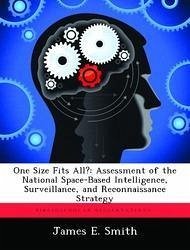Successful national security strategies rely upon successful national intelligence strategies. By using available intelligence resources to observe and orient, nations can foster success in both decision and action. This work seeks to assess the extent to which the nation's overhead imagery strategy facilitates strategic success for both decision makers and execution agents. Relying on concepts from optimal control theory, a framework built upon objectives, components, and constraints is derived. Building upon this framework the study then establishes the differing and, at times, competitive nature of tactical and strategic objectives; outlines the organizational and technical traits of the current overhead intelligence system; and assesses system optimality via cross-correlation of outlined objectives and traits. Sub-optimalities revealed through the assessment are then considered in context of frequently proposed solutions--organizational integration and system segregation.
Hinweis: Dieser Artikel kann nur an eine deutsche Lieferadresse ausgeliefert werden.
Hinweis: Dieser Artikel kann nur an eine deutsche Lieferadresse ausgeliefert werden.








